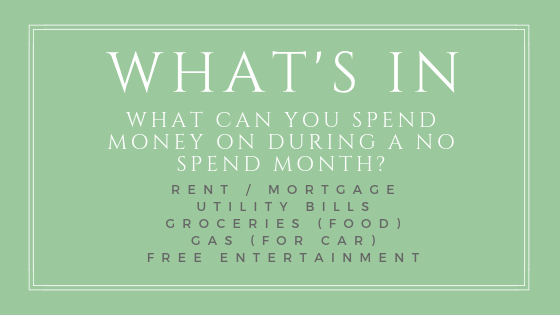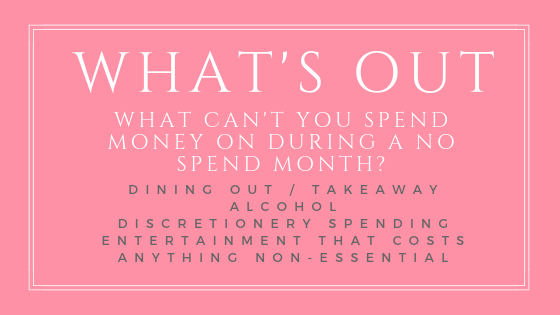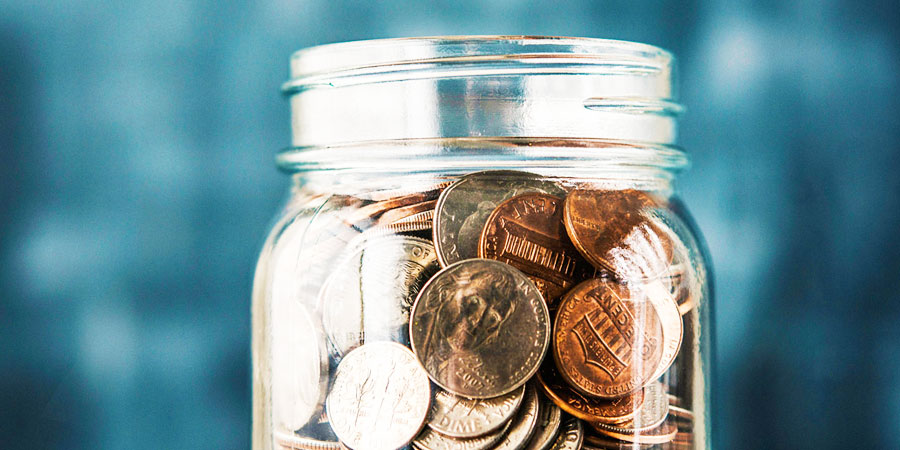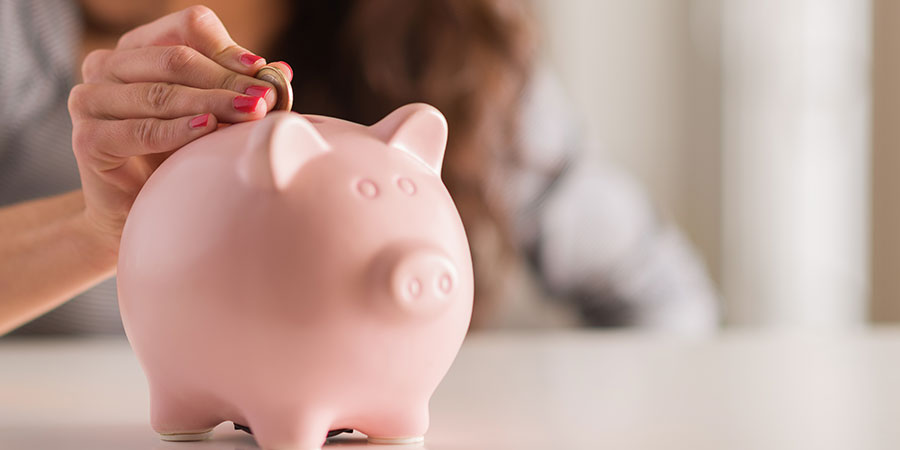Your No Spend Month – Are You Up for the Challenge? (Includes Tips)
I try to do a No Spend Challenge every year. For me, the tradition started seven years ago and I have only skipped one year since.
It has improved my finances significantly. I wrote a book about my experiences in 2011, and while the book 30 Day Spending Detox, is a little outdated now, I thought I’d update my thoughts and give you some tips and advice for doing your own spending freeze.
This year I did a no spend month in February.
Why February?
A lot of people choose September. Probably because the alliteration sounds good. No Spend September.
I like to do the challenge early in the year. It gives a good foundation to the rest of the year and sets up more mindful financial goals as the year progresses.
January is too busy (and can get expensive) with school going back (in Australia), therefore I chose February.
I don’t have any major birthdays or anniversaries. It’s a clear month. And a short one. 😉 So it makes a good month to stop spending.
Why Do a No Spend Month?
For some, spending is out of control. We buy things without much thought.
If we need a new lipstick – no problem, let’s buy one. Even though we have a make-up bag full of them already. We reason with ourselves. I don’t have that new shade of lipstick. It’s on sale. I need it for that date/job interview/Sunday brunch.
Consumerism has become a way of life. It’s become normal to constantly buy new things.
It’s eroding our savings and putting us into debt.
Debt was the reason I started the challenge back in 2011. Today it’s to build my savings, remain in control of my finances, and be a more responsible consumer.
Seven years ago it was weird to stop spending for a month. These days it’s acceptable and even encouraged. We’ve become more socially conscious and financially aware. And who doesn’t love a challenge?
Short-term benefits
The most obvious short-term benefit is that you’ll save money, which can help with your savings goal or for paying down debt.
You might also find that you have more free time. The peace from stepping out of the shopping hustle can be enlightening. Or not. You could crave to get back to the mall again once the challenge finishes. You’ll find that out soon.
After the No Spend Month Challenge is over you’ll start to think more mindfully about every new purchase you make. You went without for a month.
Do you really need this new thing? Sometimes the answer will be yes, sometimes it will be no.
Which means you’ll have power over your spending habits. Control. That can give you tremendous confidence that you can get out of whatever financial situation you’re in, or save for that big thing.
Whether you save $100 or $1000, you’ll learn a lot about yourself and you will be paving the road for a better future.
That’s why I still do one every year.
Are you with me?
The Rules of the No Spend Challenge
This isn’t about starving or stop paying your electricity bill. Those items are necessary.
It’s about all the other stuff.
What’s in:
- You will still need to pay for accommodation, so rent or mortgage payments on your regular living place are obviously in.
- Fixed cost and other utility bills. You’ll need gas and electricity.
- Food from the grocery store. You’ll be making all your meals this month.
- Gas/Petrol for your car. But only for necessary trips. Either stay home or walk/bike as much as possible.
- Internet/Cable/Netflix/Phone. Since this challenge is only for one month, there is no need to cancel your current services. However, you still might want to look at your usage to see if you are on the best plan.

What’s out:
All your other spending:
- Dining out/Takeaway. That includes cafe-bought coffee. You’ll be making your lunch for work/school. Having home-cooked meals every night which either you or someone else in your family will help prepare. And drinking coffee you make yourself (thank goodness for gifted coffee machines – amiright?)
- Alcohol. I know. It’s only for a month. Think how healthy you’ll feel at the end.
- Clothes, shoes, accessories. You have enough.
- Household decorative items, furniture, kitchen gadgets. You have enough. If you need something desperately then improvise until the month is over. It’s okay to boil water in the microwave if your jug dies for a few weeks.
- Body care, makeup. This is my weakness. I love a good scented body lotion.
I, I meanYou have enough. - Books, movies, apps. Borrow from the library or read/watch the ones you already have. Don’t spend money on in-app purchases.
- Entertainment. You have television, Netflix (probably), internet and more than enough free entertainment to get you by. You might even have other people living in your house. Talk to them.

I’m sure there is plenty more, but you get the idea. Essentials only, everything else is out. No spending on anything you don’t legally have to.
Did I mention that this challenge is going to be fun?
You can do this.
Preparation is Key
Before you jump into your No Spend Month it’s a good idea to prepare. Planning in advance can help your spending detox to go much smoother.
That doesn’t mean spending up big now, it does mean doing things like making meal plans, searching for free things to do around your city, browsing Pinterest for fun activities to do at home.
There are Facebook groups dedicated to taking it further. Use-it-up challenges, decluttering challenges, minimalist challenges, cooking from home ideas, pan-that-pallette challenges.
Even good ol’ low or no spend challenges. Being about to talk to others who are doing the same thing with the same goals is incredibly motivating.
Prepare by telling your family and friends that you’ll be doing the challenge. That way they can be in on it with you. Even if they aren’t doing in themselves, they might encourage you and help you.
Before my first challenge, I used to meet up with a friend at a coffee shop. Once the challenge started, we went to each other’s houses instead. We still met up, just at a more frugal location.
How Much Money Can You Save in a Month?
How much money you can save during your no spending challenge varies on several factors including lifestyle, geography, age, and reasons for doing it.
A single person in a one bedroom apartment in the city is going to have very different expenses to a four-person family in the suburbs.
Geography plays a huge factor too. Housing, food, transportation, are vastly different around the world. Even from state to state, or city to city.
The first time I did the challenge, I saved $2,000 (helped by selling unwanted items on eBay). I was hugely motivated at the time and even went so far as turning off appliances in standby mode.
My reasoning was that every cent helps. And it did. For a long while after I became very frugal. I was determined to pay down my debt. And I did. Within a few months.
I’ve relaxed somewhat over the years as my needs have changed, but I still do a spending challenge once a year if I can. Now I can save a few hundred dollars to a thousand or so by not spending.
My motivation isn’t as serious now, and my expenses and location have changed since the first time.
Now it’s about growing my savings. I credit the first No Spend Month Challenge as the catalyst to get my financial life back on track.
How much will YOU save?
You won’t know unless you do it. Most people that have emailed me have saved between $500 to $1000. Some less, one person significantly more.
So why not try?
The No Spend Week: 5 Tips to Ease into your Savings Challenge (slowly)
If you’re not ready to commit to a whole month, then why not try easing into your savings goal with a simple no spend week instead, or even just a weekend.

Some people find the idea of quitting spending for a month daunting, but anyone can do a no spend week.
It can be a good way of getting a feel for how a bigger challenge, such as not spending for a month or even a year will impact your life.
Quitting spending for a week follows the same rules as the no spend month challenge.
Essentials are in. That includes rent/mortgage, groceries, and bills.
The rest. All of your discretionary spending is out.
So no fancy cafe coffee, no impulse purchases, drinks with your Tinder date will have to wait until next week, and so on. Basically, you need to padlock that purse up and commit to becoming the boss girl of your finances.
Here are 5 Tips for Smashing out a No Spend Week
-
Eat from your fridge/freezer first.
While groceries are allowed, challenging yourself to use up all of those meals that you squirreled away in your freezer that one time you got super motivated and meal prepped, is a great way to kickstart the week.
You’ll even have fun figuring out which meat you used in the super healthy tomato stew dish you just defrosted.
Same goes for the veggie crisper. Throw all those wilted carrots into the crockpot with some stock, herbs, and chicken. Delicious and practically free.
-
Declutter.
No spend weeks are seriously excellent times to go through cupboards and donate or sell your unwanted goods.
You might make some serious cash with that designer handbag you thought was a good idea five years ago but haven’t used since.
-
Find free alternatives to your favorite things.
Instead of going to the cinema, have a movie night at home.
Love reading books? Join your local library. You might only need to go there once if they have an ebook service like Overdrive where you can borrow ebooks for free.
What’s your favorite thing? Drinks with friends? Hang out at a park instead.
There are plenty of free or low-cost alternatives to whatever is your thing, you just have to look.
-
Check your local area for events.
I’m always surprised by how many free events that our local council puts on. Especially around school holidays. Jumping castles, book readings, boot camps.
Same goes for the big shopping malls. As long as you avoid actually shopping, you can often watch bands play, sample free taste-testing, or find something for the kids to do.
Over Christmas, our local mall had face painting (for the kids, not me), Carols, Fireworks and more. Just for hanging out.
-
Decide what to do with your savings.
Having a goal in mind for the money you’ll save is the best motivation. Whether it’s to pay down debt or save for something special, know your reason why.
That reason is what will keep you strong when you get tempted to buy that super healthy green juice (find out the ingredients and make it yourself at home instead).
You Can Do It!
A week isn’t that long, but it could be the motivation to start a lifetime of better spending habits. Gaining control over your money is one of the most important things you can do to ensure a better future.
The No Spend Year – It will change your life – but is that a good thing?
In my research for doing a no spend month which I did in February of this year, I read about people who have taken the challenge to the next level and have just completed a no spend year.
A whole year without any extra spending. And it changed their lives.

Michelle McGagh did her own No Spend Year
Michelle McGagh, UK personal finance journalist from The Guardian completed a no spend year from Friday 27 November 2015 to 26 November 2016. She said, “The first six months were hard, but I found a new way of living and the challenge has left me wealthier and wiser.” Source.
She realized how much money she was spending on small incidental things. A drink at the pub, eating out at restaurants, and mindless shopping.
She used the extra money she saved to pay extra on her mortgage making a huge difference to the length of the loan and the satisfaction of knowing how much mortgage interest she’ll save.
She saved $37,100.
Michelle has written a book called The No Spend Year. There’s also a good TED Talk about her experience which I’ve included here.
But it’s not for everyone
Writer John McDermott, mostly out of frugal necessity, also tried living a no spend year. In describing his experience he said, “denying yourself any indulgence is a sad, lonely existence.” Source.
My social life was virtually nonexistent and my contentment gone with it. I often canceled plans and ended relationships prematurely because I viewed them as an impediment to my professional and financial goals. I vividly remember one idle Saturday afternoon when, not having any work to do (for once), I realized there were people in the city out having drinks with their friends, and that I didn’t even know where to begin going about making plans like that.
It made me profoundly sad.
It changed his life too. But not for the better. Sure he had a lot of extra income but at a cost.
And it’s here I have to agree.
Personally, I couldn’t do a whole year of not spending.
One month I enjoy, but I plan for that. A week, or weekend, is doable for most everyone.
A whole year is taking things too far. It’s extreme minimalism at it’s best, and while living below your means is something I believe strongly in, if it impacts your relationships to your personal detriment, well, that’s a line you shouldn’t cross.
I like having control over my finances. I like the power of being able to save money, earn money, invest and make money.
But I couldn’t do a spending freeze for any longer than a few weeks at a time.
Especially if it made me or my family miserable. We all need that balance. And my life is exactly where I want it to be.
I’m happy to do the occasional weekend and a monthly challenge every year. It keeps me in check and gives me great insight into my mindset when I’m not spending. I wouldn’t want to do a whole year though.
What about you? Could you quit shopping for a whole year? What’s your preferred no spend challenge timeframe?
Tracey 🙂





